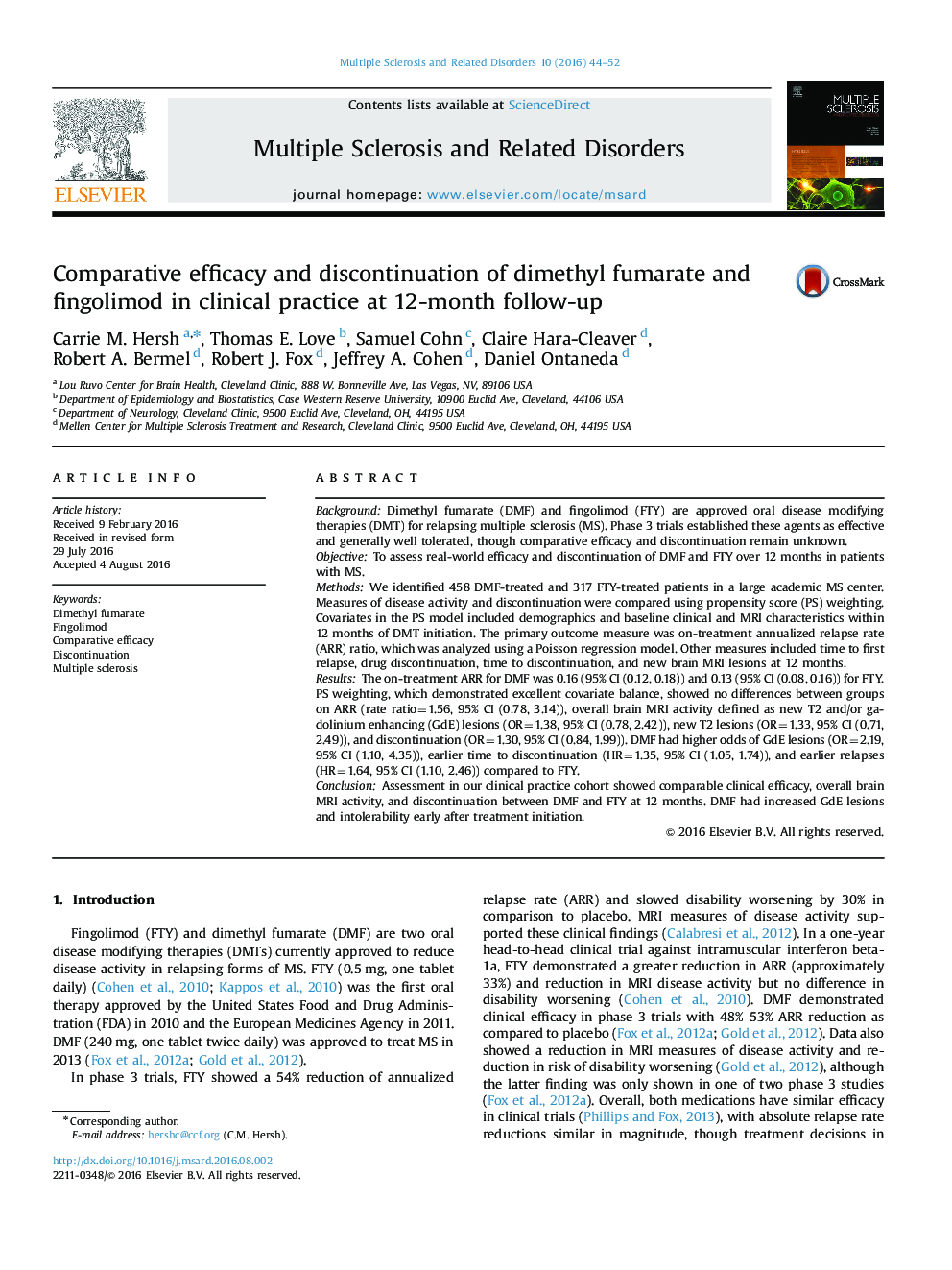| کد مقاله | کد نشریه | سال انتشار | مقاله انگلیسی | نسخه تمام متن |
|---|---|---|---|---|
| 2823786 | 1570207 | 2016 | 9 صفحه PDF | دانلود رایگان |
• DMF and FTY had comparable ARR and overall brain MRI activity at 12 months.
• DMF- and FTY-treated patients had similar proportions who discontinued therapy.
• DMF had greater GdE lesions and side effects early after treatment initiation.
• DMF-treated patients discontinued medication and relapsed earlier compared to FTY.
BackgroundDimethyl fumarate (DMF) and fingolimod (FTY) are approved oral disease modifying therapies (DMT) for relapsing multiple sclerosis (MS). Phase 3 trials established these agents as effective and generally well tolerated, though comparative efficacy and discontinuation remain unknown.ObjectiveTo assess real-world efficacy and discontinuation of DMF and FTY over 12 months in patients with MS.MethodsWe identified 458 DMF-treated and 317 FTY-treated patients in a large academic MS center. Measures of disease activity and discontinuation were compared using propensity score (PS) weighting. Covariates in the PS model included demographics and baseline clinical and MRI characteristics within 12 months of DMT initiation. The primary outcome measure was on-treatment annualized relapse rate (ARR) ratio, which was analyzed using a Poisson regression model. Other measures included time to first relapse, drug discontinuation, time to discontinuation, and new brain MRI lesions at 12 months.ResultsThe on-treatment ARR for DMF was 0.16 (95% CI (0.12, 0.18)) and 0.13 (95% CI (0.08, 0.16)) for FTY. PS weighting, which demonstrated excellent covariate balance, showed no differences between groups on ARR (rate ratio=1.56, 95% CI (0.78, 3.14)), overall brain MRI activity defined as new T2 and/or gadolinium enhancing (GdE) lesions (OR=1.38, 95% CI (0.78, 2.42)), new T2 lesions (OR=1.33, 95% CI (0.71, 2.49)), and discontinuation (OR=1.30, 95% CI (0.84, 1.99)). DMF had higher odds of GdE lesions (OR=2.19, 95% CI (1.10, 4.35)), earlier time to discontinuation (HR=1.35, 95% CI (1.05, 1.74)), and earlier relapses (HR=1.64, 95% CI (1.10, 2.46)) compared to FTY.ConclusionAssessment in our clinical practice cohort showed comparable clinical efficacy, overall brain MRI activity, and discontinuation between DMF and FTY at 12 months. DMF had increased GdE lesions and intolerability early after treatment initiation.
Journal: Multiple Sclerosis and Related Disorders - Volume 10, November 2016, Pages 44–52
